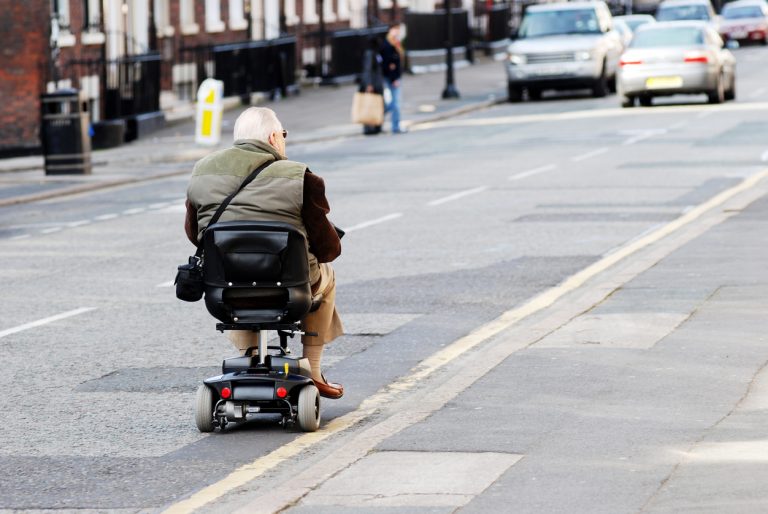Mobility Scooter Driving Safety Tips
Having a mobility scooter can bring a new lease of freedom into your life. If you are only able to walk for constricted distances and would like to become more independent, a mobility scooter could be the perfect solution. However it is important to remain safe at all times, and as such you should be aware of basic safety guidelines. Outlined below are some excellent safety tips to keep in mind, whether you are a first time mobility scooter buyer or a seasoned user.
Before you set out on your mobility scooter make sure you take time to understand how it works; it can be unnerving moving around in one for the first time and especially worrying if you press the wrong switch. You can consult your manufacturer’s guide as a refresher or have a brief tutorial in store before you take it home. Understanding what the switches and levers do will make you a more confident user overall.

Take Care With Personal Items
If you are taking a bag or small personal items with you, such as your purse or wallet, it is important to make sure you keep them safe and secure. It would be inconvenient and often costly to replace any lost items and, in addition to this, you don’t want the strap of a hand bag, for example, to be caught in your handle bars or wheels. It could cause damage to your scooter or cause you to lose control.
Drive With Care
Many mobility scooters have anti-tip mechanisms; however this doesn’t mean you should throw caution to the wind. If you are approaching or traversing a sloping path, you should try to remain as level as possible. It is tempting to take the most direct route and approach diagonally, and whilst this is quicker it is more likely you may tip. It is important to be vigilant to pavement or road conditions at all times, if you notice cracks in the pavement or patches of ice you should avoid them or slow down and proceed with caution.
Speeds and the Law
When it comes to moving around in general, remember that the purpose of a pavement or shopping centre forecourt is for pedestrian use, and as such you must give way. You don’t want to accidentally hit a person, even at low speeds you could hurt someone and the shock of an incident could put you off using your scooter altogether.
It is important to consider the legality of your scooter. You don’t need a licence to drive a mobility scooter. However, dependent upon the class of scooter you have, you might need to register it with the DVLA. But don’t worry, if this is the case it will be registered with a ‘nil value’ tax disk so you don’t have to worry about the cost.
Class 2 invalid carriages can’t be used on the road. However, if there is no pavement you are obliged to use the road. This class of mobility scooter will have a maximum speed of up to 4mph. The benefits of having this class of scooter are that it does not need to be registered with a tax disc.
Class 3 invalid carriages can be used on the road with a maximum speed of up to 8mph, however when this vehicle is not on the road they have a speed restriction of 4mph. You need front and rear lights and reflectors, indicators, a horn and a rear view mirror.
In either case, it is of vital importance to be seen to ensure your safety. Adverse weather conditions make it more difficult for drivers or other pedestrians to see you. It is easy to purchase a simple fluorescent vest from most bike or car shops – they may even sell them at your mobility scooter place of sale.
Although it is not a requirement by law, it might be a good idea to invest in third party insurance or coverage against theft and damage. Accidents are an unfortunate part of everyday life and insurance can leave you assured that, if you are involved in an accident or your scooter is stolen, you will be able to afford to replace it.
There are many other aspects of safety for you to consider, however if you keep these top tips in mind you will be a safer and more confident user overall. For expert advice and a care-orientated service, you can visit Ideas in Action for all your mobility scooter needs. The experts at Ideas in Action are here to help.
